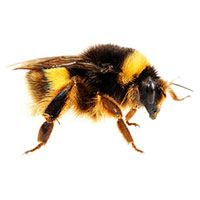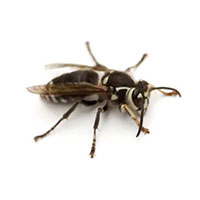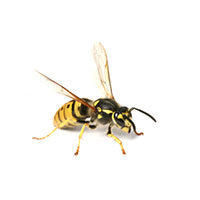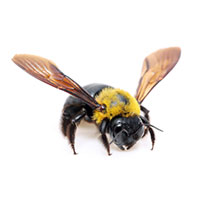Honey Bees in Wisconsin
Honey bees mainly feed on pollen and nectar collected from blooming flowers. These bees are active pollinators that, true to name, produce honey. Their colonies can survive for years. Queen honey bees are slightly larger than male honey bees, also known as drones. They are found all over the nation and pollinate more than 100 types of crops.
Honey bee colonies often contain anywhere from 20,000 to 60,000 members at any given time. Operating according to a caste system, honey bees each perform a specific role in the colony. The two main types are Africanized honey bees and European honey bees. The latter is much more aggressive than the former. Honey bees will swarm when the colony becomes too large for its hive.
Honey Bee Habitat & Nests
Honey bees can thrive in natural or domesticated environments, though they prefer to live in gardens, woodlands, orchards, meadows, and other areas where flowering plants are abundant. Within their natural habitat, honey bees build nests inside tree cavities, rock crevices, and under edges of objects to hide from predators. They can also be found in chimneys, wall cavities, or roof spaces. They make their nests out of wax secreted from the abdominal glands of the worker honey bees. Workers sweep up a few flakes of wax from their abdomens chewing them until the wax becomes soft enough to mold into cells to form the hive.
Honey Bee Behaviors & Dangers
Even though they are not aggressive or sting unless they feel threatened, most people still associate the insects with stings. When a honey bee stings, the stinger, venom sac, and other parts of the bee become detached from the body, which causes them to die. Since the glands associated with the venom sac continue to pump venom into the victim even after the bee dies, the stinger should be removed immediately. Though painful, honey bee stings are only dangerous to people with bee allergies.
In addition to posing the threat of stinging, honey bees can damage homes and other structures when they build nests in wall cavities. As the nests expand over time, the size and presence of both honey and beeswax may cause the surrounding plaster and drywall to sag or become stained. If you notice a honey bee problem forming in or near your property, always contact your local bee control experts.
Need help with Honey Bees?
We'll call you! Leave your information below.





